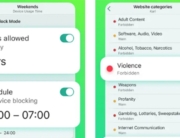Needlessly to say, Ca has enacted legislation imposing rate of interest caps on bigger customer loans. The brand new law, AB 539, imposes other demands associated with credit rating, customer training, optimum loan payment durations, and prepayment charges. What the law states is applicable simply to loans made underneath the Ca funding legislation (CFL). 1 Governor Newsom finalized the bill into legislation on 11, 2019 october. The balance happens to be chaptered as Chapter 708 regarding the 2019 Statutes.
The key provisions include as explained in our Client Alert on the bill
- Imposing price caps on all consumer-purpose installment loans, including signature loans, car and truck loans, and automobile name loans, in addition to open-end personal lines of credit, where in fact the quantity of credit is $2,500 or maybe more but lower than $10,000 (“covered loans”). Before the enactment of AB 539, the CFL currently capped the prices on consumer-purpose loans of lower than $2,500.
- Prohibiting fees for a covered loan that surpass a easy yearly rate of interest of 36percent and the Federal Funds Rate set by the Federal Reserve Board. While a conversation of just what comprises “charges” is beyond the scope for this Alert, observe that finance loan providers may consistently impose certain administrative charges as well as permitted fees. 2
- Indicating that covered loans must-have regards to about 12 months. But a covered loan of at minimum $2,500, but lower than $3,000, might not surpass a maximum term of 48 months payday loans IN and 15 times. A loan that is covered of least $3,000, but significantly less than $10,000, might not surpass a maximum term of 60 months and 15 times, but this limitation will not connect with genuine property-secured loans of about $5,000. These loan that is maximum cannot connect with open-end credit lines or particular figuratively speaking.
- Prohibiting prepayment charges on customer loans of any quantity, unless the loans are guaranteed by genuine property.
- Needing CFL licensees to report borrowers’ repayment performance to one or more credit bureau that is national.
- Requiring CFL licensees available a consumer that is free training system authorized by the Ca Commissioner of company Oversight (Commissioner) before loan funds are disbursed.
The enacted type of AB 539 tweaks a number of the earlier in the day language among these conditions, yet not in a substantive means.
The bill as enacted includes several provisions that are new increase the protection of AB 539 to bigger open-end loans, the following:
- The limitations from the calculation of costs for open-end loans in Financial Code part 22452 now connect with any loan that is open-end a real major quantity of lower than $10,000. Formerly, these limitations placed on open-end loans of significantly less than $5,000.
- The minimal payment per month requirement in Financial Code area 22453 now pertains to any open-end loan having a real major number of significantly less than $10,000. Formerly, these demands put on open-end loans of significantly less than $5,000.
- The permissible costs, expenses and costs for open-end loans in Financial Code section 22454 now affect any open-end loan with a genuine major quantity of lower than $10,000. Formerly, these conditions placed on open-end loans of lower than $5,000.
- The actual quantity of loan profits that needs to be sent to the debtor in Financial Code area 22456 now pertains to any open-end loan with a real major quantity of significantly less than $10,000. Formerly, these limitations put on open-end loans of lower than $5,000.
- The Commissioner’s authority to disapprove marketing associated with open-end loans and to purchase a CFL licensee to submit marketing content towards Commissioner before usage under Financial Code area 22463 now pertains to all open-end loans irrespective of buck quantity. Formerly, this area ended up being inapplicable to that loan having a real amount that is principal of5,000 or maybe more.
Our earlier in the day customer Alert additionally addressed problems regarding the various playing industries presently enjoyed by banking institutions, issues regarding the applicability associated with unconscionability doctrine to higher level loans, while the future of price legislation in Ca. A few of these issues will continue to be in destination as soon as AB 539 becomes effective on January 1, 2020. More over, the power of subprime borrowers to get required credit as soon as AB 539’s price caps work well is uncertain.
1 Ca Financial Code Section 22000 et seq.
2 Ca Financial Code Section 22305.






